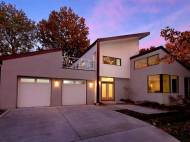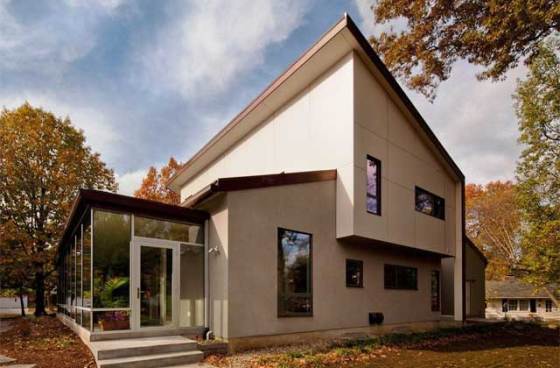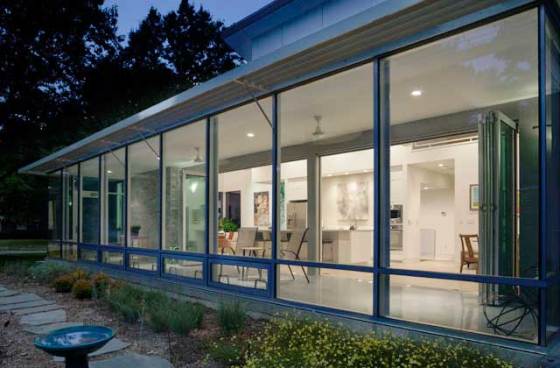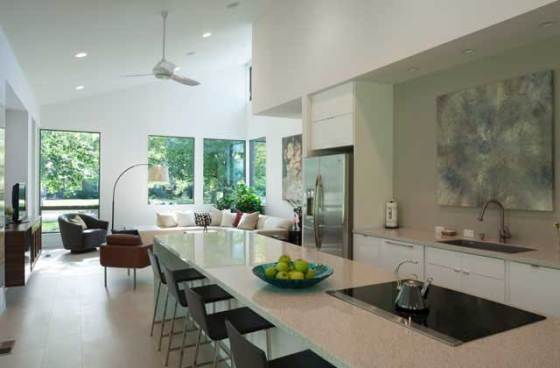Green architecture – Williams-York Residence
 The Williams-York family lived in their ranch style home for 28 years before they decided to build their modern dream home with both passive and active solutions to increase its sustainability. The new Williams-York Residence in Leawood, Kansas has recently been awarded with LEED Platinum certification, the highest certification level from LEED for Homes by the U.S. Green Building Council (USGBC) and the Green Building Certification Institute (GBCI).
The Williams-York family lived in their ranch style home for 28 years before they decided to build their modern dream home with both passive and active solutions to increase its sustainability. The new Williams-York Residence in Leawood, Kansas has recently been awarded with LEED Platinum certification, the highest certification level from LEED for Homes by the U.S. Green Building Council (USGBC) and the Green Building Certification Institute (GBCI).
Designed by Davison Architecture + Urban Design and built by Homoly Construction, the new 233-square-meter (2,520-square-foot) home is a nearly zero-energy house suitable for Midwest climate conditions. The old ranch home was deconstructed in a process that involved careful removal and classification of all reusable or recyclable materials, such as windows, doors, cabinets, trim, flooring, roof tiles, lighting and bricks.
Even the foundation walls, brick chimney and basement slab were pulverized and later used as a gravel-type mix for backfill drainage for the new residence and its new 30% fly ash concrete foundation. Granite countertops in the master bathroom and kitchen are built out of 77% recycled material. In total, the process led to 80% of materials found on site being reused or recycled.
The home’s main living spaces are facing south, while its garage is located on the north to help shelter the living spaces from cold winter winds. The residence utilizes a passive solar design which takes advantage of natural sunlight in conjunction with the design and positioning of the home to heat the structure without use of active (or mechanical) systems.
Design elements for the Williams-York residence include a general flow and openness of the main interior spaces to a south-facing solarium whose windows allow natural light to radiate throughout the home, providing year-round ambient lighting and optimizing passive solar heating during the winter. In addition, the foundation consists of a 30cm (12”) concrete slab which absorbs heat from the sun during the day and radiates that heat into the home at night.
Lower energy demand for temperature control is achieved through a tight envelope which also promotes more comfortable living. Sealing the outer walls, ceiling, windows, doors and floors and adequately insulating a structure is essential to maintaining consistent temperatures and humidity inside and eliminating air leaks, heat loss in winter and heat gain in summer.
This effect is achieved though use of Low-E argon-filled windows, which reduce energy loss by ~30-50% via a virtually invisible metal/metallic oxide coating on the glass, and the use of spray foam insulation as well as structural insulated panel systems (SIPs) with a R40 rating for the walls and ceiling.
The high-performance residence also has alternative heating/cooling and power systems. The home’s geothermal heat pump from Water Furnace provides heating, air conditioning, and hot water while using about 30% less energy than a standard heat pump and saving about 50% of energy costs over standard furnace systems. The home also features a heat recovery ventilation (HRV) system which introduces fresh air to the interior of the residence while maintaining climate control. Indoors air quality is ensured with usage of ProGreen low-VOC paints and primers.
A 4kW photovoltaic (solar array) system from Eagle Roofing is installed on the roof in order to lower the home’s electricity consumption. This solar array consists of solar roofing tile, designed to integrate into the visual aesthetic of the existing shingles. Lower energy consumption is ensured though Energy Star rated appliances and light fixtures throughout the home.
Aside a detailed tree protection plan which has been applied during the construction, Williams-York Residence also features a rainwater catchment system, which provides irrigation for low-maintenance native plantings in the surrounding landscape.












Leave your response!